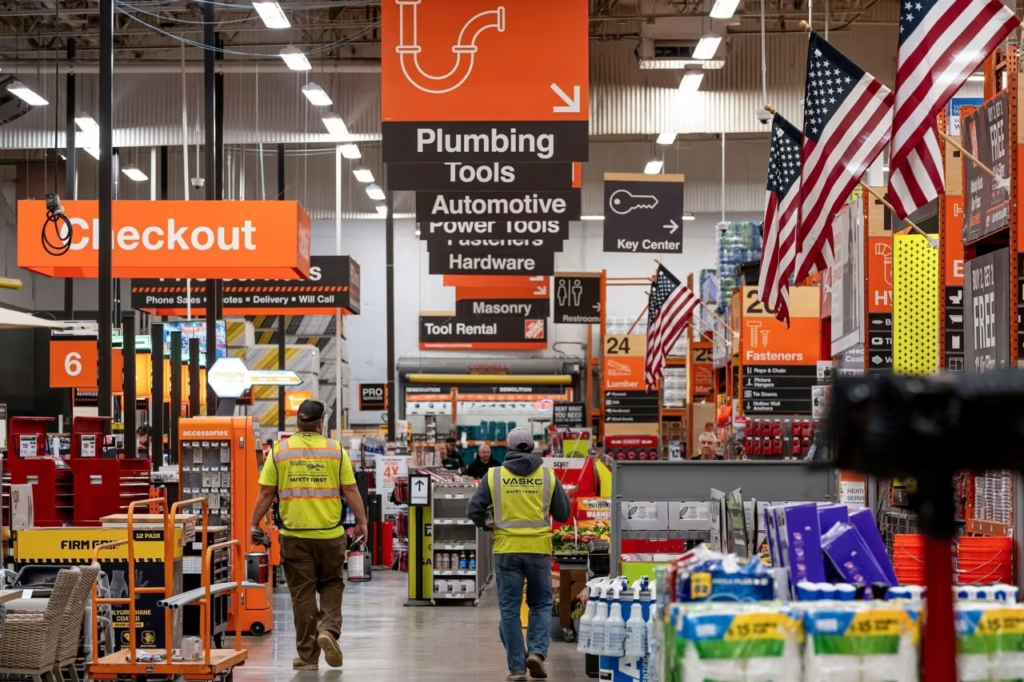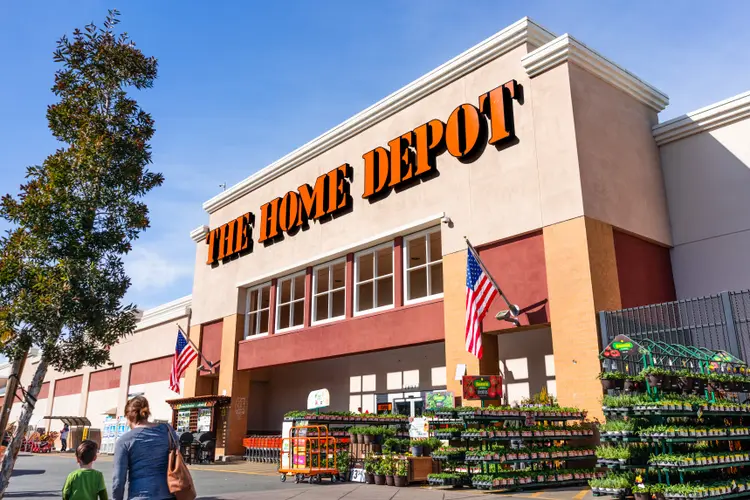Home Depot price movement has drawn attention recently as the company reports modest changes in pricing and noticeable shifts in consumer behavior. Many customers are postponing larger home improvement projects, focusing instead on smaller, more manageable tasks. Economic uncertainty, high borrowing costs, and rising mortgage rates have contributed to this trend.
Understanding Consumer Behavior Shifts
In the second quarter of 2025, Home Depot reported net sales of $45.28 billion, slightly below the anticipated $45.36 billion. Adjusted earnings per share were $4.68, missing expectations of $4.71. While comparable store sales increased by 1 percent, foot traffic declined by 2.2 percent, following a 3.9 percent drop in the previous quarter.
CEO Ted Decker noted that many consumers are deferring larger projects due to uncertainty and higher borrowing costs. Homeowners are focusing on smaller, seasonal, or repair-oriented improvements rather than major renovations like kitchen remodels or flooring replacements.
Factors Influencing Consumer Decisions
Several key factors are influencing consumers to delay major projects:
High Mortgage Rates
Mortgage rates remain high, with 30-year fixed rates around 6.6 percent. This makes borrowing for large home improvement projects less appealing. Many homeowners are unwilling to take on additional debt under these conditions.
Economic Uncertainty
Concerns about job security, inflation, and overall economic stability are causing consumers to prioritize essential spending. Discretionary projects, including large home renovations, are being postponed.
Increased Borrowing Costs
Higher interest rates not only affect mortgages but also personal loans or credit for home projects. The added cost of financing makes expensive renovations less attractive, encouraging homeowners to focus on smaller, affordable improvements.
As a result, demand for big-ticket items such as cabinets, flooring, and bathroom remodels has softened, while interest in smaller DIY projects, maintenance, and outdoor improvements has increased.
Home Depot’s Response to Changing Market Conditions

Home Depot has adjusted its strategies to meet the evolving market demands.
Emphasizing Smaller Projects
The company is promoting products and services aligned with current consumer needs. These include items for smaller home repairs, seasonal updates, and affordable DIY projects. This approach helps maintain customer engagement even when large projects are delayed.
Expanding Professional Services
Home Depot is enhancing offerings for professional contractors. This segment is more stable than the retail consumer market and provides steady revenue. By catering to contractors, Home Depot can offset fluctuations in the DIY market.
Strategic Acquisitions
The company has expanded its professional contractor capabilities through acquisitions like SRS Distribution and GMS. These moves improve the supply chain and broaden Home Depot’s reach in the professional market.
These strategies are designed to adapt to the current economic environment while positioning the company for sustained growth as consumer behavior gradually normalizes.
The Impact on Product Categories
Some product categories are more affected by these trends than others.
- Big-Ticket Renovation Items: Cabinets, countertops, flooring, and bathroom fixtures are experiencing weaker demand as consumers postpone large-scale projects.
- Smaller DIY Products: Paint, hardware, seasonal outdoor items, and minor home improvement tools are seeing steady sales.
- Professional Contractor Supplies: Materials and services for professionals continue to perform well, helping balance overall sales.
This shift in demand highlights the importance of adapting inventory and marketing strategies to focus on what consumers are buying now, rather than what they might defer to a later time.
Home Depot’s Financial Outlook

For fiscal 2025, Home Depot anticipates a 2.8 percent increase in total sales, while adjusted earnings per share are expected to decline slightly by 2 percent. Despite modest price movement, the company remains optimistic that demand for larger projects will recover as economic conditions improve and interest rates potentially decline.
Analysts view Home Depot’s performance as a key indicator for broader retail and housing trends. The company’s ability to respond to changing consumer behavior, manage its professional contractor business, and navigate economic challenges will be crucial to long-term success.
Consumer Tips for Home Improvement During Economic Uncertainty
For homeowners looking to improve their homes without overextending finances, several strategies can be helpful:
- Focus on smaller, high-impact projects like painting, landscaping, or minor repairs.
- Prioritize projects that increase home value efficiently, such as energy-efficient upgrades.
- Consider financing options carefully and avoid high-interest loans if possible.
- Monitor sales and promotions at stores like Home Depot to maximize value.
By taking a measured approach, consumers can maintain their homes and prepare for larger projects when the market stabilizes.
Conclusion
Home Depot price movement is modest, reflecting a period of adjustment for the company and its customers. Consumers are deferring larger projects due to economic uncertainty, high borrowing costs, and elevated mortgage rates. In response, Home Depot has focused on smaller DIY projects, professional contractor services, and strategic acquisitions to maintain steady growth.
As conditions gradually improve, the company expects demand for larger home improvement projects to recover. For now, Home Depot’s ability to adapt to shifting consumer behavior and changing market conditions will determine its continued success in a challenging economic environment.
Read Next – Air Canada Flight Attendant Strike Grounds Operations and Halts Financial Guidance






